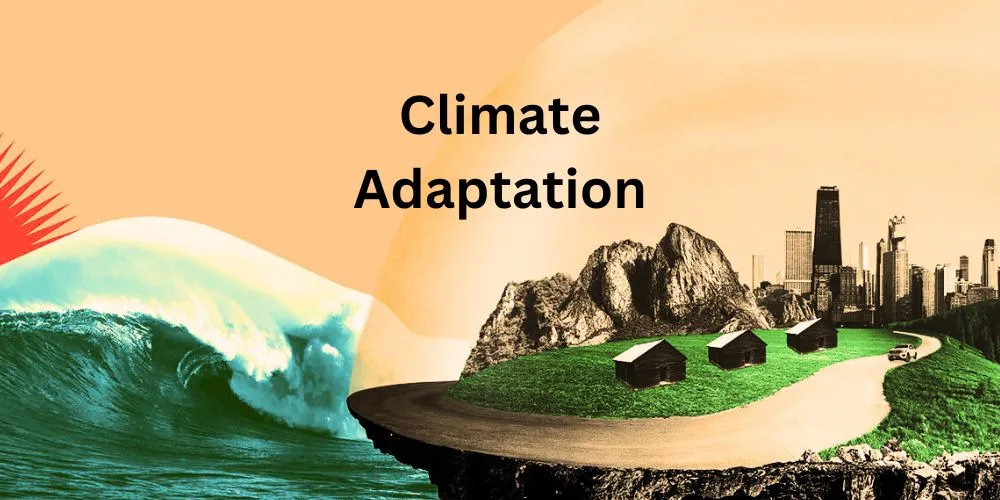Climate adaptation is a crucial and evolving field that addresses the impacts of climate change and seeks to enhance the resilience of communities, ecosystems, and infrastructure. This article delves into the comprehensive realm of climate adaptation, exploring its fundamental principles, diverse methodologies, key advantages, notable applications, and the challenges it addresses in a rapidly changing global climate.
Unveiling Climate Adaptation
Climate adaptation refers to the strategies and measures implemented to manage the effects of climate change. Unlike mitigation, which aims to reduce or prevent the emission of greenhouse gases, adaptation focuses on adjusting to the existing and anticipated impacts of a changing climate. It involves preparing for and responding to changes in temperature, precipitation patterns, sea levels, and extreme weather events to minimize vulnerabilities and build resilience.
Key Components of Climate Adaptation
Understanding the key components of climate adaptation is essential for comprehending its scope and impact:
- Risk Assessment and Vulnerability Analysis: Climate adaptation begins with a comprehensive assessment of risks and vulnerabilities. It involves identifying areas, communities, and ecosystems most susceptible to climate impacts, ensuring targeted and effective adaptation strategies.
- Community Engagement and Participation: Successful climate adaptation relies on the active engagement and participation of communities. Inclusive decision-making processes ensure that adaptation measures address local populations’ unique needs, concerns, and knowledge, fostering ownership and sustainable outcomes.
- Infrastructure and Ecosystem Resilience: Enhancing the resilience of infrastructure and ecosystems is a fundamental component of climate adaptation. It includes designing and retrofitting structures to withstand extreme weather events and protecting ecosystems that provide essential services, such as flood prevention and water purification.
H3: Methodologies of Climate Adaptation
It employs various methodologies to address the multifaceted challenges posed by a changing climate:
- Nature-Based Solutions: Nature-based solutions leverage ecosystems to provide adaptation benefits. Examples include restoring wetlands to absorb floodwaters, planting trees for shade and cooling, and preserving natural habitats to support biodiversity that can enhance overall ecosystem resilience.
- Climate-Resilient Agriculture Practices: Agriculture is highly vulnerable to climate change. Agriculture involves implementing drought-resistant crops, improved water management, and diversification to build resilience against changing climate conditions.
- Early Warning Systems and Preparedness: Developing early warning systems is crucial for climate adaptation. Timely information about approaching extreme weather events allows communities to prepare and evacuate if necessary, minimizing the potential impact on lives and property.
Advantages of Climate Adaptation
The adoption of climate adaptation brings forth a multitude of advantages, shaping the ability of communities and ecosystems to cope with a changing climate:
Increased Resilience to Climate Hazards
One of the primary advantages of climate adaptation is the increased resilience of communities and ecosystems to climate hazards. Through proactive measures and strategic planning, vulnerabilities are identified and addressed, minimizing the negative impacts of extreme weather events.
Protection of Critical Infrastructure
Climate adaptation protects critical infrastructure from the impacts of climate change. Adaptation measures ensure the continued functionality and safety of essential services by designing and retrofitting buildings, transportation systems, and utilities to withstand climate-related stresses.
Preservation of Ecosystem Services
It contributes to the preservation of ecosystem services. By safeguarding natural habitats and promoting sustainable land management practices, adaptation efforts ensure the continued provision of services such as water purification, pollination, and carbon sequestration.
Economic Stability and Security
It contributes to economic stability and security. By reducing the risks of climate-related disasters, communities can maintain productive economic activities, safeguard livelihoods, and avoid the economic downturns associated with extensive damage and recovery efforts.
Applications of Climate Adaptation
Climate adaptation finds applications across diverse contexts, influencing how societies, governments, and organizations prepare for and respond to the challenges of a changing climate:
Urban Planning for Climate-Resilient Cities
Urban planning plays a crucial role in climate adaptation. Cities are implementing strategies such as green infrastructure, flood-resistant design, and sustainable water management to enhance resilience and protect against the impacts of urban heat islands and extreme weather events.
Coastal Protection and Sea-Level Rise Mitigation
Coastal areas face significant threats from rising sea levels and extreme weather events. In coastal regions, it involves measures such as the construction of sea walls, beach nourishment, and the restoration of natural buffers like mangroves to mitigate the impacts of rising sea levels.
Agricultural Adaptation Strategies for Food Security
Agricultural adaptation is essential for ensuring food security in the face of climate change. Farmers are adopting precision agriculture, agroforestry, and crop diversification practices to adapt to changing temperatures, water availability, and pest patterns.
Community-Based Adaptation Initiatives
Community-based adaptation initiatives empower local communities to develop and implement strategies tailored to their needs. These initiatives often include the training of community members in sustainable practices, the establishment of early warning systems, and the creation of local adaptation plans.
Challenges in Climate Adaptation
While the advantages are evident, the practice of climate adaptation faces its challenges. Addressing these challenges is crucial for realizing the full potential of climate adaptation efforts:
Resource Constraints and Funding Gaps
Resource constraints and funding gaps pose challenges to effective climate adaptation. Many communities, particularly in developing regions, lack the financial resources to implement comprehensive adaptation measures, hindering their ability to prepare for climate impacts.
Uncertainties in Climate Projections
Uncertainties in climate projections present challenges for planning and implementing adaptation measures. Climate models can provide a range of possible future scenarios, making it difficult to predict the exact nature and intensity of climate impacts, which complicates the development of targeted adaptation strategies.
Interconnected Global Challenges
It is interconnected with global challenges like poverty, inequality, and geopolitical conflicts. Addressing climate impacts requires a holistic approach that considers the broader socioeconomic context and emphasizes the need for international cooperation.
Future Trends in Climate Adaptation
As technology continues to evolve, future trends in climate adaptation point toward advancements that further enhance its capabilities:
Climate-Resilient Technologies and Infrastructure
The development of climate-resilient technologies and infrastructure is a future trend in climate adaptation. Innovations such as resilient building materials, smart infrastructure systems, and climate-resistant crops can significantly enhance communities’ ability to adapt to changing climate conditions.
Integrated Climate-Change Education
Integrated climate-change education is gaining importance. Future trends involve incorporating educational curricula at various levels, ensuring the next generation has the knowledge and skills to address climate challenges.
Cross-Sectoral Collaboration for Comprehensive Solutions
Cross-sectoral collaboration is crucial for comprehensive climate solutions. Future trends in climate adaptation involve breaking down silos between different sectors, such as agriculture, water management, and urban planning, to develop integrated and synergistic adaptation strategies.
Increased Focus on Social Equity in Adaptation Planning
There is an increased focus on social equity in adaptation planning. Future trends involve addressing the disproportionate impacts of climate change on vulnerable and marginalized communities, ensuring that adaptation strategies prioritize inclusivity and social justice.
Conclusion
Climate adaptation is an essential pillar in the global response to climate change, offering a proactive and strategic approach to addressing its impacts. Its ability to build resilience, protect communities, and preserve ecosystems positions it as a key element in creating a sustainable and resilient future. While challenges persist, ongoing advancements and future trends indicate a dynamic and promising future for climate adaptation, with applications extending into new frontiers of climate-resilient communities and ecosystems.











